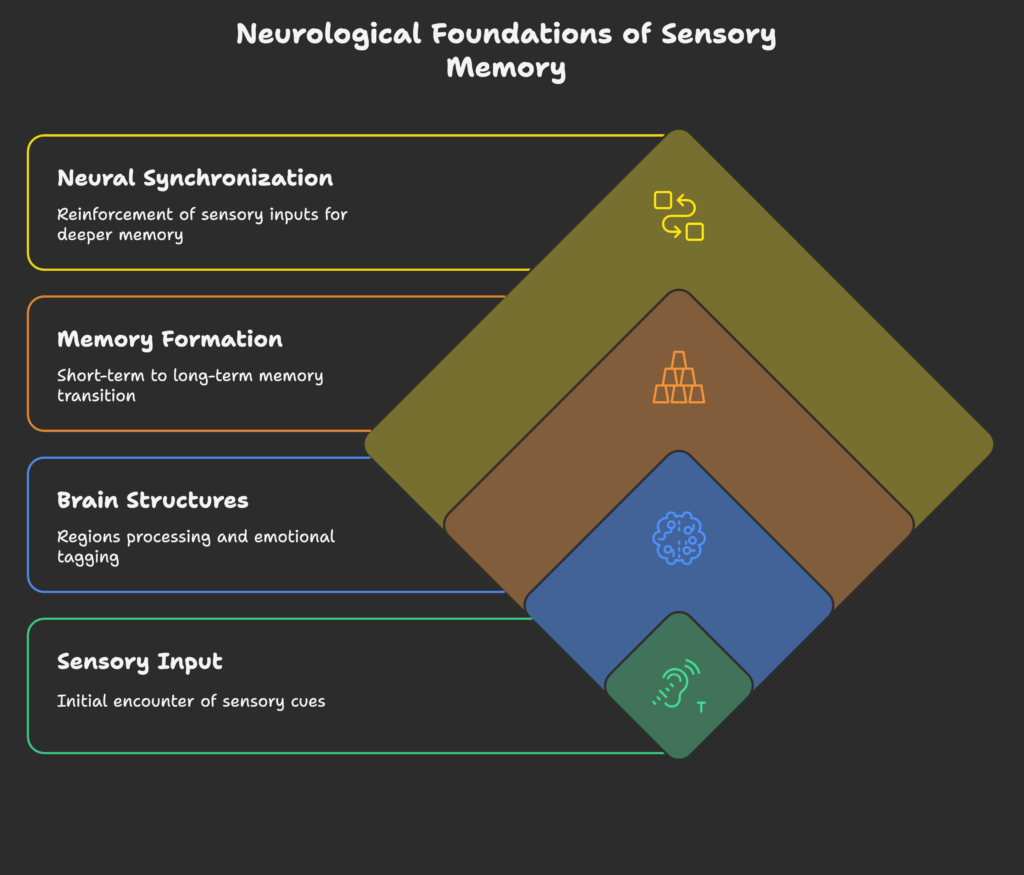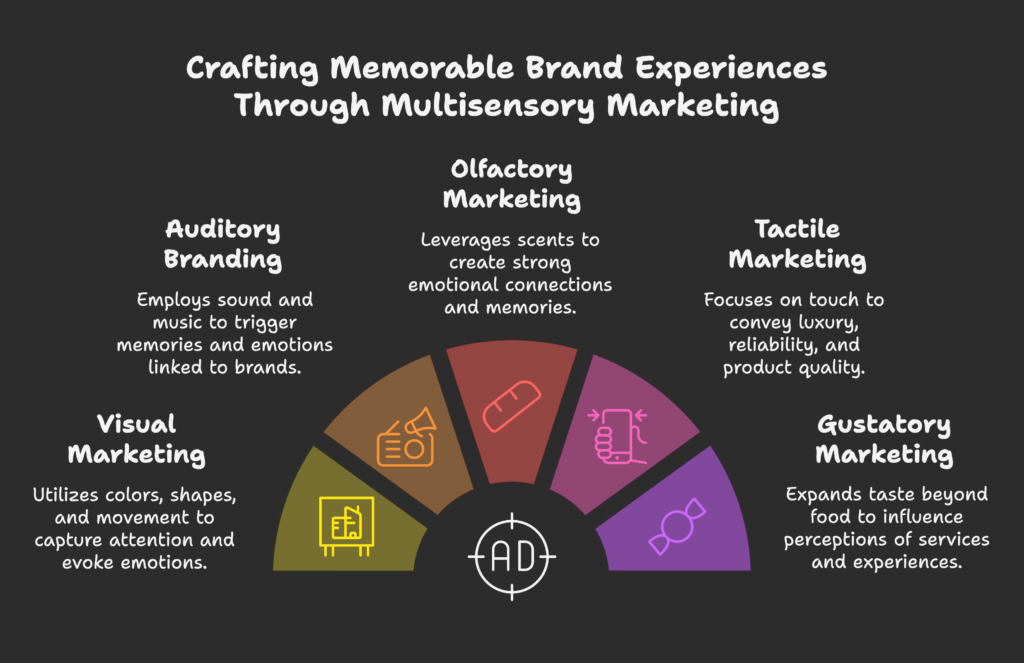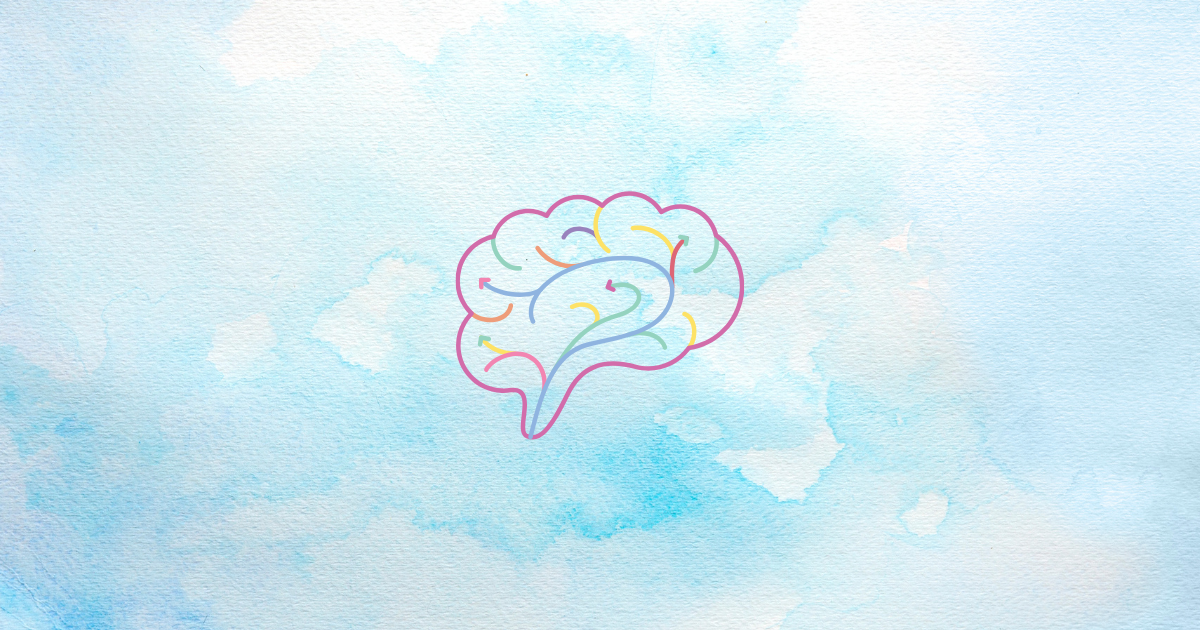Have you ever felt instantly attracted to a brand just because of a smell, a taste, or a specific sound? Did you notice how easily those sensory details stayed in your mind, making you recall a particular store or product weeks later? In this article, you’ll learn how combining different senses can strengthen people’s memories of brands. By the time you finish reading, you’ll understand why “multisensory” marketing is so powerful, what brain processes are at play, and how you can use these insights to create unforgettable customer experiences. Ready to ignite your curiosity? Let’s begin!
Introduction to Sensory Marketing and Neural Activation
In this first section, we’ll explore what sensory marketing is all about, how it shifted from traditional approaches, and why activating multiple neural pathways can lead to more loyal and satisfied customers. By the end, you’ll see how tapping into people’s senses can be both scientifically driven and extremely profitable.
Definition and Conceptual Framework
Sensory marketing uses sights, sounds, smells, tastes, and touch to create strong emotional bonds between brands and consumers. While older marketing relied mostly on visuals and words, multisensory marketing brings in the entire range of human senses. This shift happened because research found that the brain forms deeper connections when multiple senses are triggered at the same time. As a result, customers build stronger and more lasting memories related to a product or service.
The Neuroscience Behind Sensory Marketing
Our limbic system processes emotions, and when different senses are triggered, it lights up more actively. Scientific studies show that multisensory experiences can improve brand recall by up to 70%. This is because the brain uses several “pathways,” like the hippocampus for memory and the olfactory bulb for scents, to form and retrieve memories. The more pathways involved, the easier it is for us to remember.
The Business Case for Multisensory Approaches
Brands that use sensory marketing often see bigger sales and stronger loyalty. Engaging the senses can differentiate you from competitors because many brands still rely on predictable, purely visual campaigns. By appealing to feelings rather than just logic, you build emotional connections that encourage customers to return. This emotional depth also supports long-term brand equity—think of it as planting memorable seeds in the customer’s mind.
We now have a broad view of what sensory marketing is and why it works so well. But how do these senses truly impact the brain? Next, we’ll journey deeper into the neurological side of things. Ready? Let’s continue!
The Neurological Foundations of Sensory Memory
In this section, you’ll discover the key parts of the brain involved in processing and storing sensory information. By the end, you’ll have a better understanding of how memories form and how emotional arousal makes brand experiences more unforgettable.

Brain Structures Involved in Sensory Processing
When people encounter sensory cues, multiple brain regions light up. For instance, the nucleus accumbens and orbitofrontal cortex handle reward and decision-making. The occipital cortex processes visuals, while the amygdala tags experiences with emotions (like fear, excitement, or joy). Different senses even combine in the association cortex, where cross-modal integration helps us see, hear, or feel a consistent experience.
Memory Formation and Consolidation
Short-term memories usually form in the hippocampus, and if they’re meaningful or repeated, they move into long-term storage. Emotional intensity boosts this process—when a brand makes you feel happy or surprised, you remember it more. Sleep is another piece of the puzzle, allowing the brain to consolidate these memories so they stay with you longer.
Neural Synchronization Across Sensory Channels
Ever notice how a pleasant smell can strengthen a visual impression or how a cool color scheme might make a musical jingle more impactful? This is because multiple sensory inputs often reinforce each other, forming deeper memory “networks.” With enough repetition, the brain adapts—called neuroplasticity—and these brand associations become stronger, making it easier for customers to recall you.
We’ve just explored the inner workings of your brain and how senses shape what you remember. Next up, we’ll look at each of the five senses in marketing and see exactly how they affect memory. Sound exciting? Let’s keep going!
The Five Senses in Marketing: Neural Pathways and Memory Impact
In this section, we’ll break down how each sense—vision, hearing, smell, touch, and taste—can shape customer impressions in unique ways. By the end, you’ll see how mixing these senses can create an immersive brand story.

Visual Pathways and Brand Memory
Humans rely heavily on sight. Colors, shapes, and movement all grab our attention. Certain colors can evoke feelings—red might suggest passion, while green suggests peace. The brain’s visual processing area quickly identifies brand logos or shapes it recognizes. If these visuals are repeated consistently, the neural patterns become more solid, helping customers recall your brand with just a glance.
Auditory Processing and Sonic Branding
Sound can also be a powerful memory trigger. Ever hear a familiar jingle and instantly think of a specific product? Our brain processes music in the auditory cortex, linking it to emotions. The frequency and rhythm of a tune can spark excitement or calmness. With sonic branding, brands design unique sounds—like Netflix’s “ta-dum!”—to stand out and become memorable in just a second.
Olfactory Marketing and Memory Enhancement
Scent goes straight to the limbic system through the olfactory bulb, which has a strong connection to memory. This is why a single whiff of a certain smell can remind us of childhood or a favorite store. Brands like bakeries or coffee shops use smell to draw people in and form emotional attachments. These scents linger in our minds, making us think of that brand long after we leave the shop.
Tactile Sensations and Haptic Marketing
Touch is sometimes overlooked, but it’s a direct path to feeling comfort or excitement. The somatosensory cortex processes touch, and when we feel high-quality textures—like a soft fabric or a cool metal finish—it can suggest luxury or reliability. In packaging, the weight or smoothness of a box can impact how “premium” we think a product is. Even in digital spaces, brands try to simulate haptic feedback through vibrations on smartphones to give a tactile sense of interaction.
Gustatory Marketing Beyond Food Industries
Lastly, taste might seem relevant only to food brands, but it can be metaphorical too. Words like “spicy” or “sweet” can shape how we perceive services or experiences. Meanwhile, actual taste (like sampling sweets in a candy store) activates pleasure centers in our brain. By integrating flavor with other senses, brands can deliver a memorable “wow” factor.
Now that we’ve explored each sense, it’s time to see how blending them all can create even more powerful connections. Ready to discover the magic of multisensory integration? Let’s go!
Multisensory Integration: Creating Stronger Neural Networks
In this section, you’ll learn how multiple senses work together, why matching them properly matters, and how timing plays a crucial role. By the end, you’ll see the bigger picture of how to create a harmonious sensory experience.
Cross-Modal Sensory Enhancement
When two or more senses are stimulated in sync, they amplify each other. For instance, offering a specific scent while showing a related image can increase overall impact. This is called a superadditive effect, where 1 + 1 is greater than 2 because your brain loves consistency. Congruent cues make it easier for the brain to form a complete idea.
The Neuroscience of Sensory Congruence
Our brain is wired to notice when things match or clash. If we see a bright summer-themed image but smell winter spices, it might confuse us. Congruent sensory signals are processed more smoothly, leading to positive feelings and better memory retention. The anterior cingulate cortex helps with conflict detection, so if the signals match, your brain relaxes and absorbs the brand message more effectively.
Temporal Synchrony in Multisensory Marketing
Timing can also make or break multisensory marketing. If a sound effect lags behind a visual clip, our brain notices the mismatch. Aligning these inputs within the right “binding window” ensures the senses feel united. This can be seen in ads where music hits at the exact moment a new image appears, making everything more vivid.
We’ve seen how combining senses at the right time and in the right way can multiply the power of marketing. Next, we’ll look at practical ways to bring these ideas to life in retail settings, online platforms, packaging, and more. Intrigued? Let’s move forward!
Practical Applications of Neural Pathway Activation
Here, you’ll discover real-world techniques for applying sensory marketing across retail environments, e-commerce, product packaging, and advertising. By the end, you’ll have actionable ideas to create memorable brand experiences in any channel.
Retail Environment Design
In physical stores, consider combining soft background music with appealing scents. For instance, a clothing store might pump in a gentle floral aroma and maintain warm lighting to create a relaxed vibe. Placing interactive displays at key spots can engage the sense of touch. These elements work together to enhance memory formation, so shoppers leave with a lasting, positive impression.
Digital and E-commerce Sensory Strategies
Though online shopping can’t directly provide smells or physical touches, brands get creative with ASMR videos, immersive product visuals, or even AR/VR experiences. These digital methods tap into sight and sound in unique ways. Some platforms are experimenting with “digital scent” tools, though still in early stages. For now, well-designed visuals and high-quality audio can still make a big impact.
Product Packaging and Design
Packaging is often the first physical contact customers have with a product. Emphasize textures, colors, and even subtle sounds—like a satisfying “click” when opening a lid. Adding a faint scent to packaging materials can further boost excitement. The result? A memorable unboxing that sparks curiosity and loyalty, leading people to share experiences online.
Advertising and Content Strategy
In ads, combine engaging visuals with catchy sound bites. Some brands use cross-modal metaphors, like describing coffee as “velvety” to blend taste and touch. Telling a story that stimulates different senses can help viewers imagine what it feels like to use your product, increasing emotional engagement. Researchers even measure brainwave patterns in advertising labs to see how well these strategies activate neural pathways.
We’ve looked at practical steps across various platforms. Now, how do these approaches play out in specific industries? Let’s find out with real-world examples. Ready? Let’s dive in!
Industry-Specific Applications and Case Studies
In this section, you’ll see how luxury brands, food and beverage companies, beauty products, and tech giants use sensory marketing to their advantage. By the end, you’ll see how these best practices can spark your own ideas.
Luxury Brand Sensory Marketing
High-end brands like Chanel or Dior often conduct fMRI studies to see how the brain responds to their ads, fine-tuning visuals and sounds for maximum reward activation. Rolex, for instance, triggers feelings of exclusivity with refined store scents and carefully selected lighting. By layering multiple senses—like gentle background music, plush carpets, and subtle fragrances—they create a space that screams “luxury” to your brain.
Food and Beverage Sensory Strategies
Think of walking into Starbucks: the aroma of coffee, the warm colors, the soothing music. This holistic experience makes people feel at home. Fast-food chains also shape taste perception with color schemes (reds and yellows can stimulate appetite). Meanwhile, packaging that preserves the freshness of flavors can instantly remind consumers of positive dining moments.
Beauty and Personal Care
Many beauty brands focus on texture and scent. A skincare product might feel silky on the skin while releasing a gentle fragrance, sparking strong emotional cues in the brain. Campaigns like Rhode Skin’s “Strawberry Glazed” or Glossier’s “Cookie Butter Balm” aren’t just about the product—they’re about painting a tasty, comforting mental picture. This helps consumers remember and revisit these items later.
Technology and Consumer Electronics
Apple is famous for its careful design of both the product and the unboxing experience. That subtle “whoosh” when you remove the lid and the pristine layout inside triggers delight. Sound design in user interfaces (like notification tones) also forms quick mental associations. Haptic feedback, like a slight vibration when you tap the screen, adds a final sensory layer that your brain won’t forget.
After these case studies, you might wonder how brands measure these efforts. Let’s explore the science of evaluating sensory marketing results. Ready to go deeper? Let’s continue!
Measuring the Impact of Multisensory Marketing
In this section, you’ll learn how companies assess the effectiveness of sensory campaigns, from advanced neuroscience tools to everyday business metrics. By the end, you’ll see how to confirm whether your multisensory approach is working.
Neuroscientific Measurement Approaches
Marketers sometimes use fMRI scans to watch which brain areas light up in response to certain stimuli. EEG equipment can track brainwave changes when participants view an ad or sample a product. Eye-tracking helps measure visual attention, while biometrics like heart rate and skin conductance show emotional arousal. These scientific methods reveal if sensory cues are really hitting home.
Behavioral and Psychological Assessment
Memory recall tests are a simple way to see if people remember specific elements of your brand. Implicit association tests uncover hidden feelings about sensory experiences, while surveys let you gather feedback on how well your brand resonated emotionally. Conducting these tests over time, like in a longitudinal study, helps you see if the positive impressions are sticking around.
Business Performance Metrics
All this neural excitement ideally leads to higher conversion rates, repeat purchases, and the ability to command premium prices. If your sales go up while customers express more loyalty and brand satisfaction, your sensory strategy is succeeding. Keep an eye on how many new customers come in through word of mouth—if your sensory approach is memorable, people will share their experiences.
Measuring success is essential, but so is doing it in a responsible, thoughtful way. That’s where ethics come into play. Curious about the fine line between influence and manipulation? Let’s take a look!
Ethical Considerations in Sensory Marketing
In this section, you’ll explore the moral and inclusive aspects of using powerful sensory triggers. By the end, you’ll appreciate how to use these strategies responsibly while respecting customers’ well-being.
Transparency and Consent
When using strong sensory elements—like intense scents or bright flashing lights—brands should be open about what customers are experiencing. Giving clear information ensures that people can opt out if they feel uncomfortable. Even in creative marketing, honesty builds trust.
Inclusivity and Accessibility
Not everyone experiences senses the same way. Some might have allergies to certain smells or difficulties with loud noises. Cultures differ in their taste or scent preferences. Considering these differences is key to creating an inclusive environment where nobody feels left out or uneasy.
The Line Between Influence and Manipulation
While sensory marketing aims to make brands more memorable, it’s important not to exploit people’s vulnerabilities. Using these techniques to nudge purchasing decisions is fine, but overstepping into emotional manipulation can damage trust. Think of sensory marketing as a way to enhance genuine connections, not trick people into buying.
With ethics covered, let’s look ahead to the future of sensory marketing. Ready to explore emerging tech and personalization? Let’s see what’s next!
Future Trends in Sensory Marketing and Neural Activation
Now, we’ll dive into the exciting innovations shaping the future of sensory marketing, from new technologies to hyper-personalized strategies. By the end, you’ll get a glimpse of how tomorrow’s brands might engage our senses in ways we never imagined.
Technological Advancements
Companies are developing digital scent technology that can release smells through small devices connected to your phone or computer. Haptic feedback is evolving for virtual reality, allowing you to feel virtual objects. And we might even see early versions of brain-computer interfaces that transmit brand experiences directly to our minds. While still in development, these breakthroughs show that sensory marketing will only grow more immersive.
Personalized Sensory Marketing
Imagine a system analyzing your personal preferences—maybe you love minty smells or prefer softer textures—and tailoring brand experiences just for you. AI could optimize each interaction, making marketing hyper-personal and potentially boosting your emotional connection with the brand. However, this raises fresh concerns about privacy and consent, reminding us to balance convenience with respect for user boundaries.
Cross-Modal Virtual and Augmented Reality
Extended reality (XR) environments may include lifelike smells, tastes, or temperature changes to make virtual brand experiences more believable. The more senses these systems engage, the more likely you are to remember them. In the metaverse, well-designed sensory triggers might help brands stand out in an increasingly crowded digital space.
Now you have a peek at what’s coming next in sensory marketing. But how do you practically implement these ideas in your business? Let’s talk strategy!
Implementation Strategies for Businesses
In this section, you’ll find a roadmap for integrating sensory marketing into your brand. By the end, you’ll know how to plan, budget, and unify different parts of your organization to activate multiple neural pathways in your customers.
Sensory Audit and Strategy Development
First, assess your current touchpoints: store layout, packaging, online design, and so on. Ask yourself: “Which senses am I engaging effectively, and where am I lacking?” Next, develop a plan to add or improve sensory cues. Maybe you want a signature brand scent or more visually consistent themes. Keep it cohesive—your senses should tell the same story.
Resource Allocation and ROI Considerations
Implementing multisensory strategies can be cost-effective if done smartly. You don’t always need the latest tech; sometimes, small adjustments like better lighting or an appealing brand jingle can be enough. Track how these changes impact customer loyalty and sales. If you see positive results, gradually scale up your sensory initiatives.
Cross-Functional Integration
Sensory marketing isn’t just a “marketing department” thing. Product designers, store managers, digital teams—they all need to collaborate. Staff should understand why certain music plays in the store or why a webpage has specific sounds. A united front guarantees that every customer interaction feels like part of the same experience.
You’re now ready to apply sensory marketing in a practical, coordinated way. Finally, let’s wrap up with a look at the broader picture and a few closing thoughts. Ready for the conclusion? Let’s go!
Conclusion: The Future of Memory-Enhanced Marketing
In this final section, we’ll summarize how activating multiple neural pathways creates a powerful competitive edge. We’ll also touch on research gaps and give final perspectives on the balance between science and human connection.
The Competitive Advantage of Neural Pathway Activation
By tapping into multiple senses, brands embed themselves deeper into customers’ minds. This strengthens recall, loyalty, and overall enjoyment, leading to long-term success. As more companies see the value of memory-enhanced marketing, those who master it early will stand out in crowded markets.
Research Gaps and Opportunities
While we know multisensory marketing works, many areas remain unexplored. For instance, how cultural differences shape scent preferences or how new digital tools can simulate touch more effectively. Collaboration across neuroscience, psychology, and marketing can open new frontiers and refine our understanding of how sensory cues affect consumer decisions over time.
Final Perspectives on Sensory-Neural Marketing
In a world saturated with standard advertising, adding a multisensory layer helps your brand resonate. But remember to keep things ethical and human-focused. It’s not about tricking people—it’s about creating genuine, memorable experiences that enrich everyday life. By respecting personal boundaries and cultural contexts, you can build trust and loyalty that last.
Extra Tip for Shopify Store Owners: Looking to boost your sales while engaging the senses? Try the Growth Suite app. It offers tools to help you create an inviting atmosphere online and guide your customers through interactive, memorable experiences. Over time, your Shopify store can stand out by connecting with people on a deeper level!
References
- Getlinko. (2025, February 5). Sensory Marketing: Definition, Types And Examples.
https://getlinko.com/en/sensory-marketing/ - SoCal News Group. (2025, March 6). Sensory Marketing Guide.
https://www.socalnewsgroup.com/2025/03/06/sensory-marketing-guide/ - Saha. (2024, June 27). The Science Behind Sensory Marketing: Understanding Consumer Psychology. LinkedIn.
https://www.linkedin.com/pulse/science-behind-sensory-marketing-understanding-consumer-saha-5g1tc - Luxonomy. (2024, October 4). Sensory Marketing: How Luxury Brands Engage the Brain.
https://luxonomy.net/sensory-marketing-how-luxury-brands-engage-the-brain/ - Glion Institute. (2024, March 4). Unlock Sensory Marketing: What it is and Why it Works.
https://www.glion.edu/magazine/what-is-sensory-marketing/ - WCFA Global. (n.d.). Sensory Marketing – Best Case Studies.
https://www.wcfaglobal.com/news/149/sensory-marketing-best-case-studies - Popular Pays. (2025, January 2). The Rise of Sensory Marketing: Why Brands Are Making You Feel.
https://popularpays.com/blog/harnessing-sensory-marketing-guide - The Experiential Net. (2023, July 15). The Power of Sensory Marketing in Experiential Campaigns.
https://blog.theexperientialnet.com/the-power-of-sensory-marketing-in-experiential-campaigns - Saha. (2024, June 28). Digital Sensory Marketing: Engaging the Senses in a Virtual World. LinkedIn.
https://www.linkedin.com/pulse/digital-sensory-marketing-engaging-senses-virtual-world-saha-gbmgc - Neuron Marketing. (n.d.). Sensory Marketing: How Neuroscience is Enhancing Customer Experiences.
https://www.neuronmarketing.com.au/blog/sensory-marketing-how-neuroscience-is-enhancing-customer-experiences - Ecom Experts. (2024, December 25). Sensory Marketing: How to Make Your Brand Unforgettable in 2025.
https://ecomexperts.io/blogs/all/sensory-marketing-how-to-make-your-brand-unforgettable - Praharaj. (2024, February 11). Sensory Marketing: The Line Between Influence and Manipulation. LinkedIn.
https://www.linkedin.com/pulse/sensory-marketing-line-between-influence-manipulation-praharaj-lbnwc



